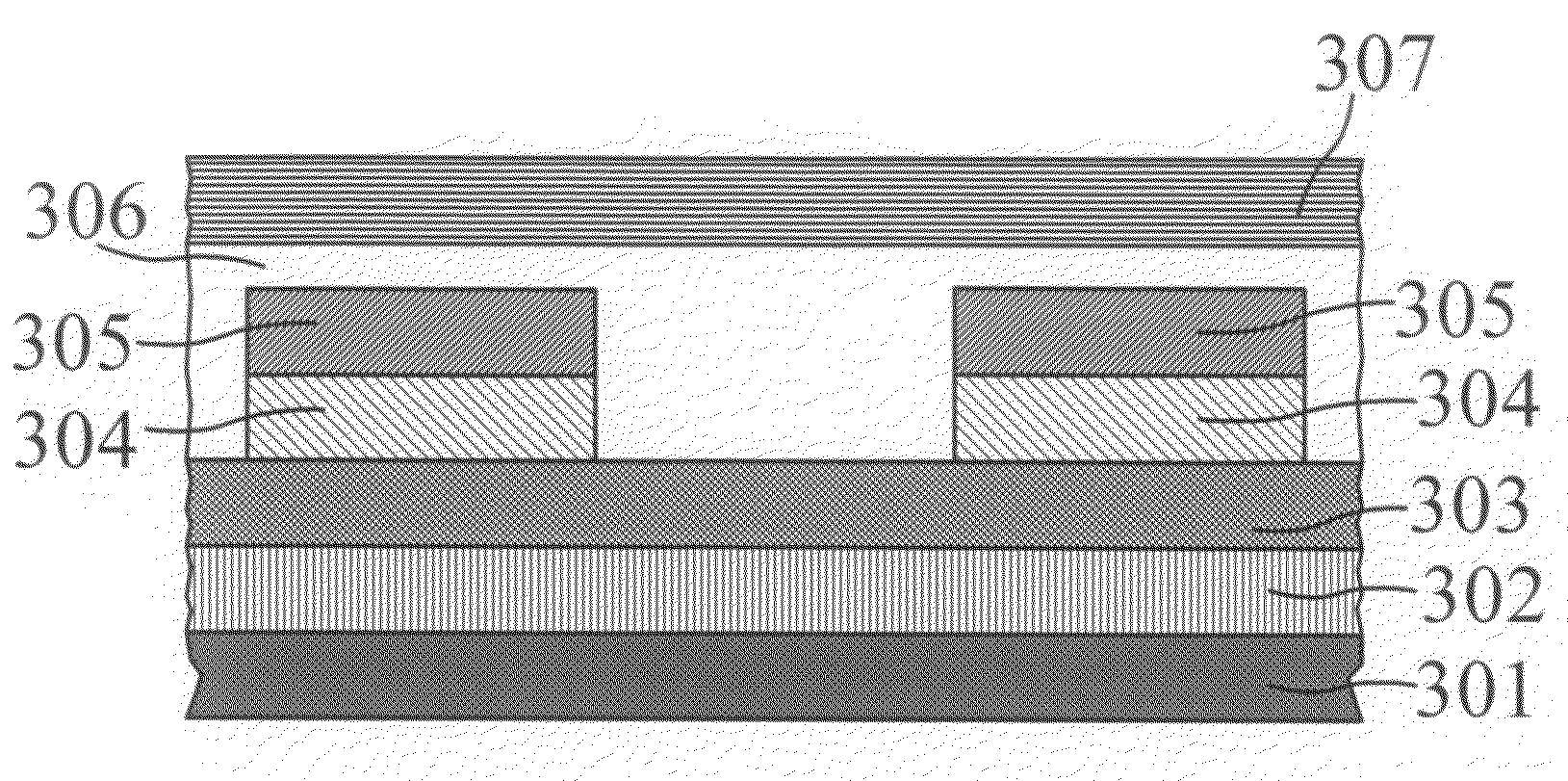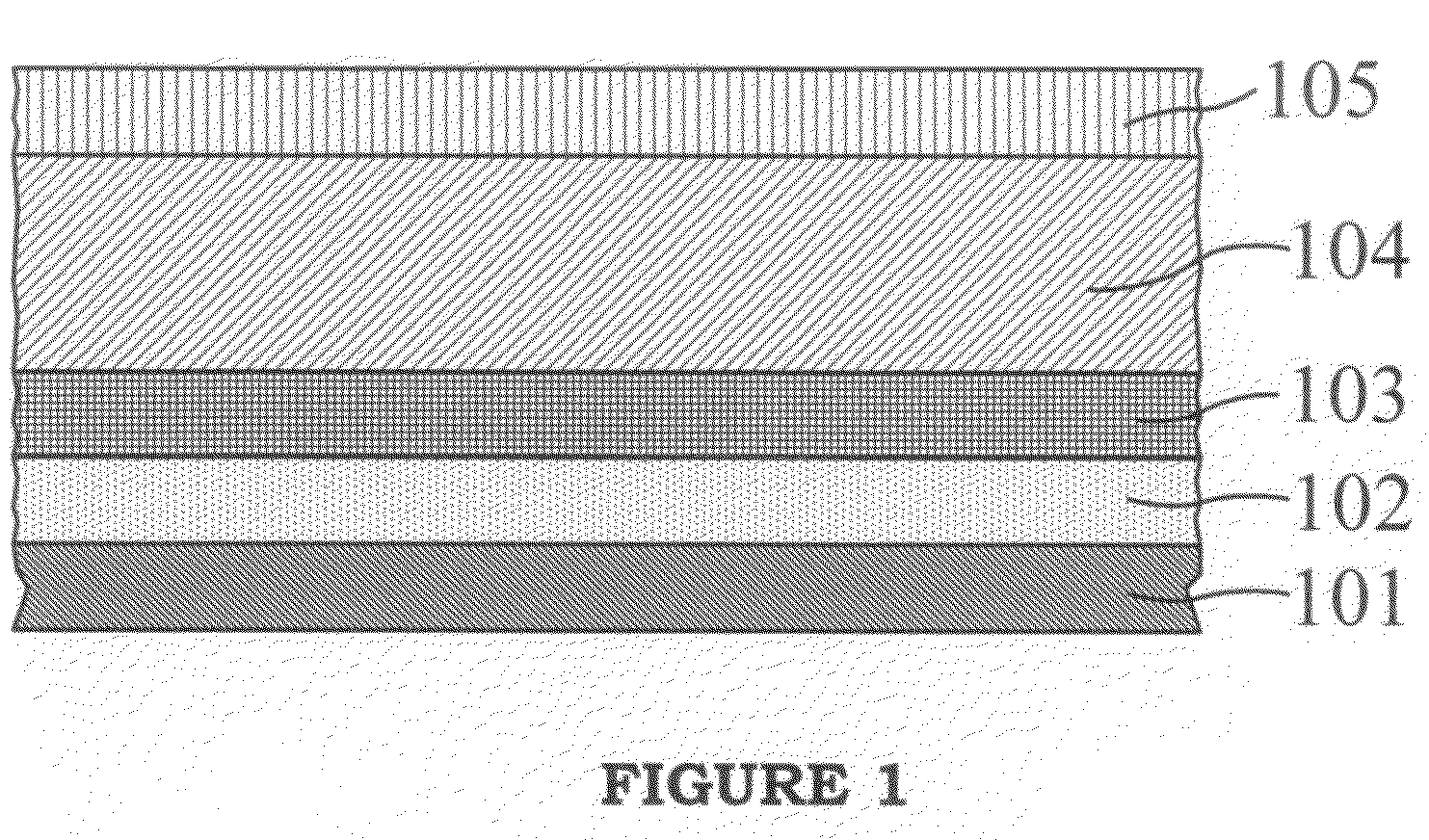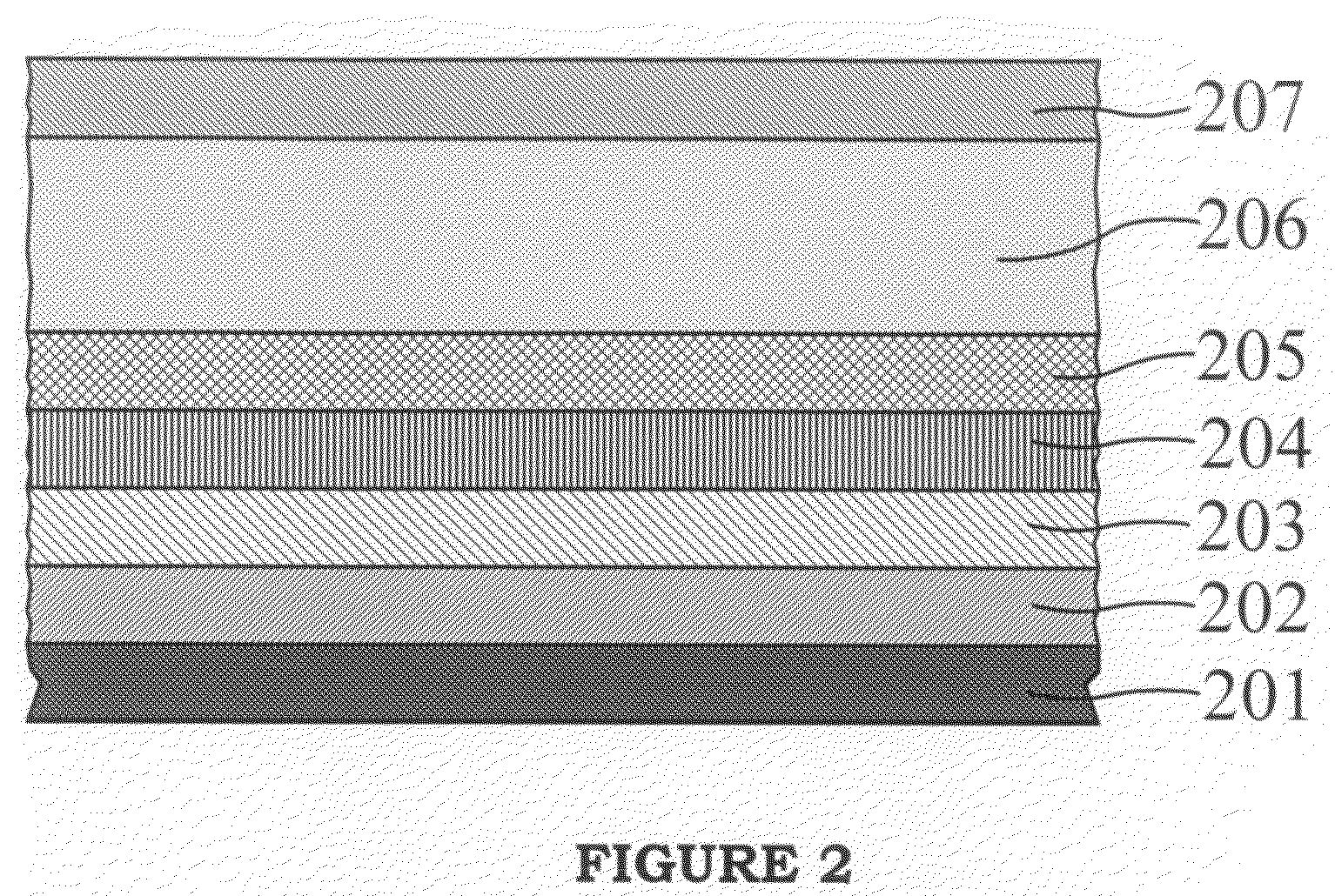TCO-based hybrid solar photovoltaic energy conversion apparatus
a solar photovoltaic energy and hybrid technology, applied in the direction of electrical equipment, basic electric elements, semiconductor devices, etc., can solve the problems of low ineffective enhancement of solar photovoltaic energy conversion efficiency, and only absorbing sunlight within the visible light wavelength range of solar cells made of the above-mentioned materials, etc., to achieve high visible light transparency, low cost, and high coating capability
- Summary
- Abstract
- Description
- Claims
- Application Information
AI Technical Summary
Benefits of technology
Problems solved by technology
Method used
Image
Examples
Embodiment Construction
[0026]The following is a description of the present invention. The invention firstly will be described with reference to one exemplary structure. Some variations will then be described as well as advantages of the present invention. A preferred method of fabrication will then be discussed. An alternate, asymmetric embodiment will then be described along with the variations in the process flow to fabricate this embodiment.
[0027]The invention relates to a solar photovoltaic energy conversion apparatus, more particularly to a transparent conductive oxide (TCO) based hybrid solar cell device, which not only allows the transmission of visible sunlight but also can enhance the photovoltaic energy conversion efficiency. The transparent conductive oxide material is adopted in the structure. The following detailed description is included in the structure of the solar cell:
[0028]As shown in FIG. 3, there is a substrate 301 in the structure, which is normally made of glass, quartz or mono-crys...
PUM
 Login to View More
Login to View More Abstract
Description
Claims
Application Information
 Login to View More
Login to View More - R&D
- Intellectual Property
- Life Sciences
- Materials
- Tech Scout
- Unparalleled Data Quality
- Higher Quality Content
- 60% Fewer Hallucinations
Browse by: Latest US Patents, China's latest patents, Technical Efficacy Thesaurus, Application Domain, Technology Topic, Popular Technical Reports.
© 2025 PatSnap. All rights reserved.Legal|Privacy policy|Modern Slavery Act Transparency Statement|Sitemap|About US| Contact US: help@patsnap.com



